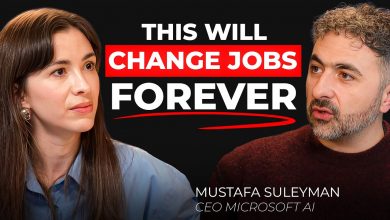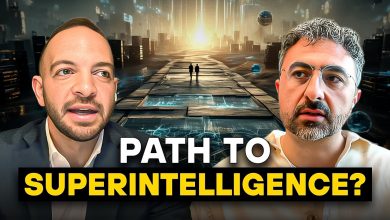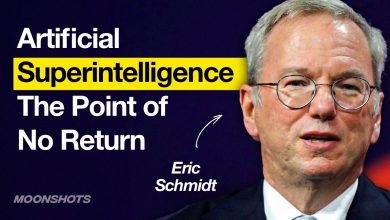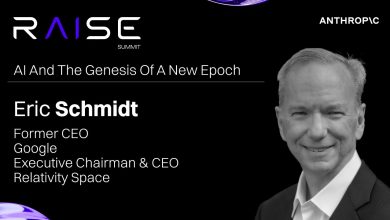The Last 6 Decades of AI — and What Comes Next | Ray Kurzweil
Kurzweil emphasizes the exponential growth of computational power as a driving force behind AI’s progress, a trend he began tracking 40 years ago.
 Ray Kurzweil, a renowned futurist and AI pioneer, has offered profound insights into the evolution of artificial intelligence over the past six decades, as highlighted in his 2024 TED Talk, The Last 6 Decades of AI — and What Comes Next, and his book The Singularity Is Nearer.
Ray Kurzweil, a renowned futurist and AI pioneer, has offered profound insights into the evolution of artificial intelligence over the past six decades, as highlighted in his 2024 TED Talk, The Last 6 Decades of AI — and What Comes Next, and his book The Singularity Is Nearer.
His journey began in 1962, shortly after the term “artificial intelligence” was coined at the 1956 Dartmouth Conference.
At that time, AI was a fringe concept, met with skepticism even among computer scientists who believed it was either impossible or centuries away.
Early Beginnings
Early optimists like Marvin Minsky, Kurzweil’s mentor, thought human-level intelligence could be achieved in a single semester, while Kurzweil himself argued it would take decades but was feasible within their lifetimes. A pivotal moment was Alan Turing’s 1950 paper introducing the Turing Test, which set a benchmark for evaluating machine intelligence.
Kurzweil emphasizes the exponential growth of computational power as a driving force behind AI’s progress, a trend he began tracking 40 years ago. This growth, often misattributed solely to Moore’s Law, predates modern computing and spans technologies from telephone relays to integrated circuits.
For instance, the Zuse 1 computer in 1941 performed a mere 0.00007 calculations per second per dollar, whereas today’s systems have transformed industries like healthcare, finance, and social relations. This computational leap has enabled breakthroughs such as sophisticated language models that now outperform humans in specific tasks, like generating human-like text.
Kurzweil’s own contributions, including the first text-to-speech synthesizer, the first charge-coupled device flatbed scanner, and the Kurzweil Keyboard K250, laid foundational work for AI applications in accessibility and creativity.
Beyond Human – The Age of Intelligent Machines
His 1990 book The Age of Intelligent Machines foresaw the internet’s explosive growth when only 2.6 million users were online, and his 1999 prediction that AI would reach human-level intelligence by 2029, once dismissed, is now seen as plausible.
Looking to the future, Kurzweil predicts that by 2029, AI will achieve human-level intelligence, matching the most skilled humans across domains and attaining artificial general intelligence capable of outperforming humans in any intellectual task. He considers this timeline conservative, noting that figures like Elon Musk anticipate this milestone by 2027.
By 2045, Kurzweil envisions the Singularity, a transformative moment when human intelligence merges with AI through brain-computer interfaces like Neuralink, amplifying human cognition a millionfold. Nanobots integrated into our brains could enhance memory, creativity, and intelligence, allowing humans to back up their minds like digital data. This merger, he argues, will redefine what it means to be human.
Kurzweil also foresees AI-driven medical advances reaching longevity escape velocity by the early 2030s, where scientific progress adds more than a year to human lifespan for each year that passes.
Currently, we gain about four months annually, but innovations like senolytic therapy and AI-accelerated drug discovery could delay diseases and extend healthspan, potentially leading to indefinite lifespans barring accidents. He acknowledges AI’s dual-use nature, capable of both beneficial applications, like medical drones, and destructive ones, like weaponry.
Asilomar AI
To address this, he helped develop the Asilomar AI Principles for responsible governance. Kurzweil remains optimistic, viewing AI as an extension of human values within our human-machine civilization.
He advocates for strengthening ethical ideals and social institutions to mitigate risks while maximizing benefits like curing diseases and alleviating poverty, and supports Universal Basic Income to ease economic disruptions from rapid AI advancements.
Despite his optimism, Kurzweil recognizes AI safety concerns raised by figures like Geoffrey Hinton and Elon Musk, though he believes risks are manageable and outweighed by potential benefits. He cites humanity’s historical progress in reducing violence as evidence that ethical advancements can keep pace with technology. Critics, however, have challenged his predictions.
Some, like Daniel Lyons, note inaccuracies in his 2009 forecasts, such as the dominance of speech-to-text or self-driving cars, while others, like Paul Allen and Steven Pinker, question the feasibility of a singularity due to computational or cognitive limits. Kurzweil claims an 86% accuracy rate for his predictions, though critics argue he sometimes reinterprets data to fit his narrative.
Nevertheless, his accurate forecasts, like the internet’s growth and AI’s chess victory by the 1990s, lend weight to his vision. For a deeper exploration, his TED Talk and The Singularity Is Nearer offer a compelling roadmap for AI’s transformative future, provided humanity navigates its ethical and societal challenges with care.



